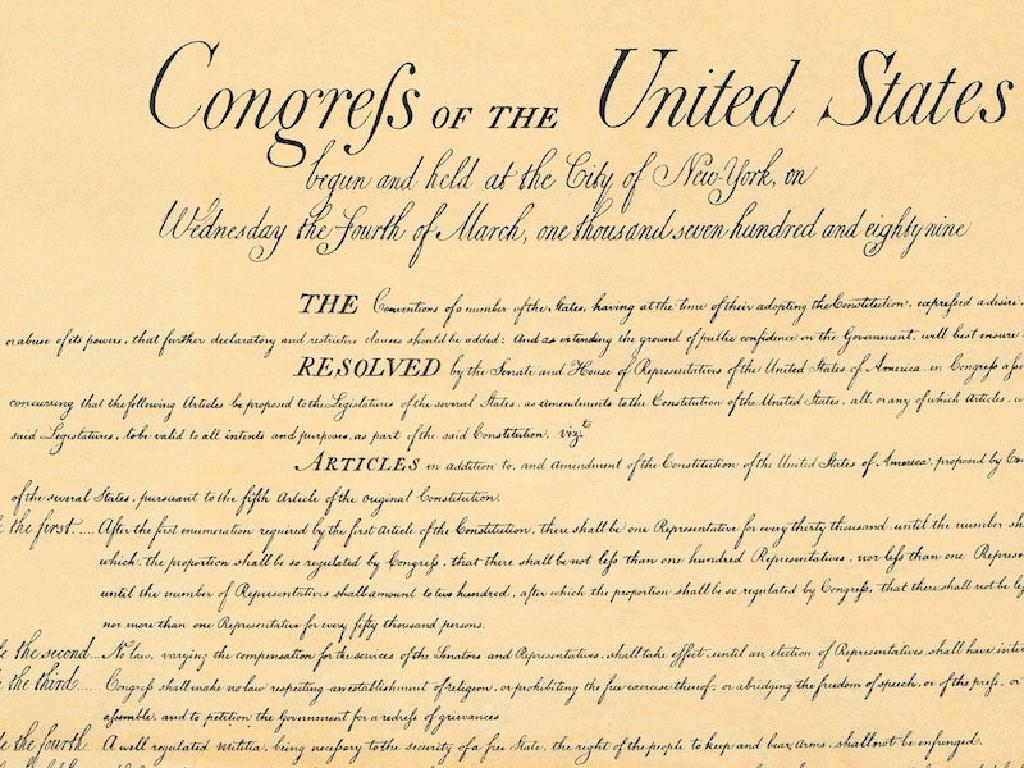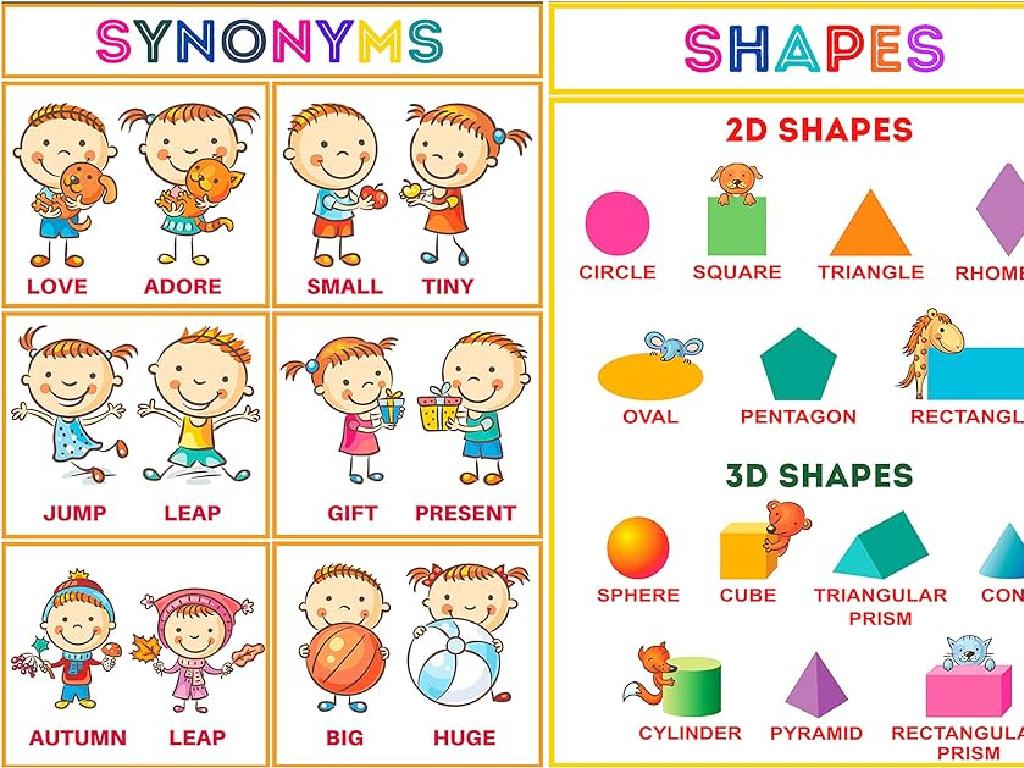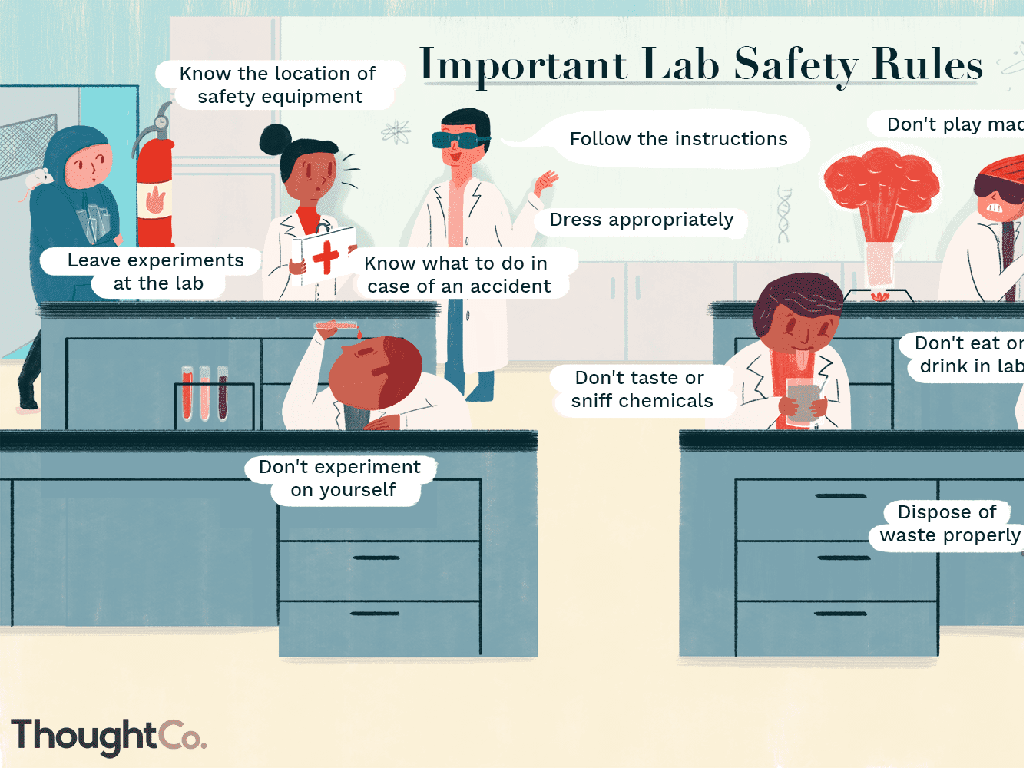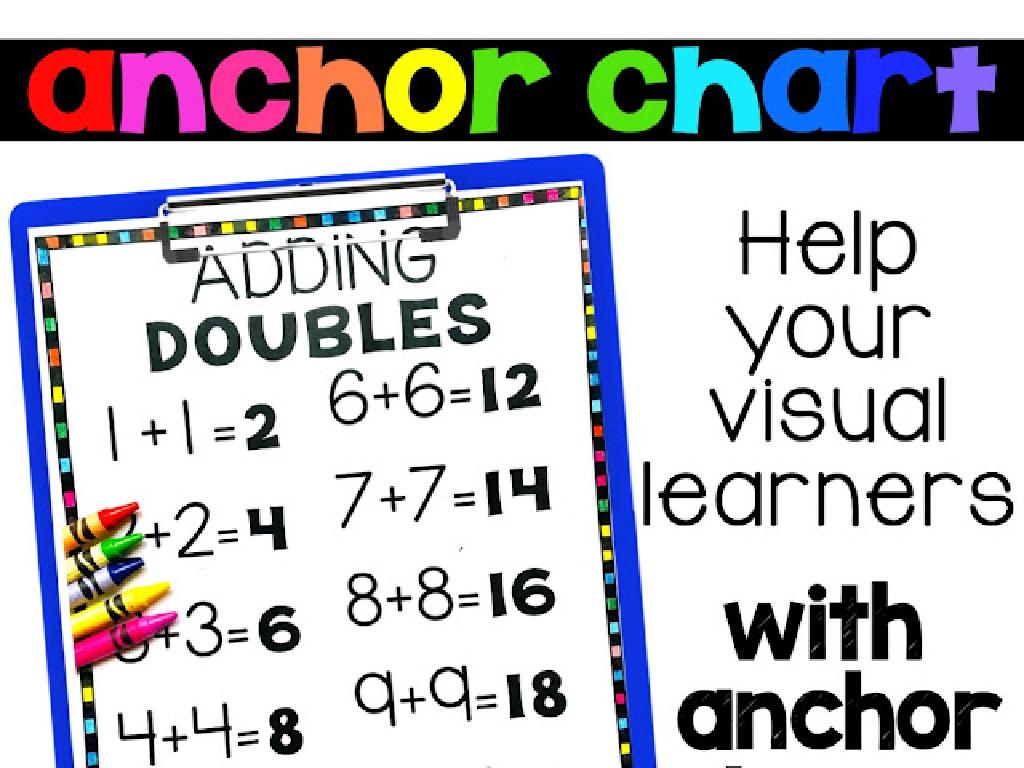Civil Liberties And Civil Rights
Subject: Arts and humanities
Grade: High school
Topic: Ap /College Us Government And Politics
Please LOG IN to download the presentation. Access is available to registered users only.
View More Content
Civil Liberties vs. Civil Rights
– Foundations of our freedoms
– Basic rights and freedoms inherent to all citizens
– Civil Liberties vs. Civil Rights
– Liberties are protections from gov’t, rights ensure equality
– The Bill of Rights significance
– First 10 amendments of the Constitution protecting freedoms
– Exploring cornerstone freedoms
– Freedom of speech, religion, and press; right to a fair trial
|
This slide introduces students to the fundamental concepts of civil liberties and civil rights, which are essential to understanding American government and politics. Civil liberties refer to the basic freedoms guaranteed by the Bill of Rights, such as freedom of speech and religion, which protect citizens from government overreach. Civil rights concern the right to be free from discrimination and to have an equal opportunity in various aspects of life, including voting, employment, and education. The Bill of Rights is highlighted as the cornerstone document that enumerates specific civil liberties. Encourage students to think critically about how these concepts apply to current events and historical struggles for rights and freedoms in the U.S.
Exploring Civil Liberties
– Define Civil Liberties
– Fundamental freedoms protected by law
– Examples: Speech, Religion, Press
– Key freedoms include speech, religious belief, and a free press
– First Amendment Protections
– The amendment prohibits government from restricting these liberties
– Case Study: First Amendment
– Analyze historical cases involving First Amendment rights
|
This slide introduces the concept of civil liberties, which are fundamental freedoms that the Constitution protects from government interference. Highlight examples such as freedom of speech, religion, and press to illustrate these liberties in a tangible way. Discuss the First Amendment of the U.S. Constitution, which is pivotal in safeguarding these rights. Use a case study to delve into a real-life scenario where the First Amendment played a crucial role, such as a landmark Supreme Court decision. This will help students understand the practical application and importance of civil liberties in American democracy. Encourage students to think critically about how these liberties apply in current events and their own lives.
Civil Rights: Understanding Equality
– Define Civil Rights
– Rights protecting citizens’ freedom from discrimination
– Examples: Voting and Legal Equality
– Right to vote regardless of race, gender; Equal protection in courts
– Civil Rights Act of 1964
– Landmark legislation prohibiting discrimination
– Impact on Society
– Paved the way for equality in voting, employment, education
|
Civil rights are the protections and privileges given to all citizens by law. They are designed to ensure fairness and prevent discrimination based on characteristics such as race, religion, gender, or disability. Highlight examples like the right to vote and equal protection under the law to illustrate these concepts. Delve into the Civil Rights Act of 1964 as a case study, explaining its significance in ending segregation and discrimination in public spaces, employment, and schools. Discuss the broader impact of this legislation on society, emphasizing how it laid the groundwork for further civil rights advancements. Encourage students to think critically about the ongoing challenges and the role of legislation in shaping a just society.
Landmark Supreme Court Cases: Civil Liberties & Rights
– Brown v. Board of Education overview
– 1954 case ending racial segregation in schools
– Impact on civil liberties and rights
– Set precedent for equality in education, influencing civil rights movement
– Judiciary’s role in interpretation
– Courts analyze and define the scope of rights
– Enforcement of civil concepts
– Courts ensure laws align with constitutional protections
|
This slide focuses on the landmark case Brown v. Board of Education and its profound impact on civil liberties and civil rights in the United States. The case, decided in 1954, declared state laws establishing separate public schools for black and white students to be unconstitutional, thus ending de jure racial segregation. It was a cornerstone that led to the expansion of civil rights protections. The role of the judiciary is crucial in interpreting the Constitution and ensuring that laws and policies do not infringe upon the civil liberties and rights guaranteed to all citizens. This case exemplifies how the Supreme Court’s interpretation of the Constitution can lead to significant societal changes and protect individual rights. Encourage students to consider how this case set the stage for future civil rights advancements and to discuss the ongoing role of the judiciary in upholding these fundamental principles.
Civil Liberties and Rights in the Digital Age
– Privacy challenges with technology
– How tech impacts personal privacy and data security.
– Online freedom of expression
– The extent and limits of expressing oneself on the internet.
– National security vs. individual rights
– Finding equilibrium between safety measures and civil liberties.
|
This slide delves into the complexities of civil liberties and rights in the context of the ever-evolving digital landscape. It’s crucial to discuss the impact of technology on privacy, highlighting issues such as data collection, surveillance, and the potential for breaches. Freedom of expression online is another key point, examining how the internet has become a platform for free speech and the legal and social boundaries that come with it. Lastly, the balance between national security and individual rights is a contentious topic, especially in terms of government policies on surveillance and data access. Encourage students to think critically about current events and legal cases that illustrate these challenges. Provide examples such as the debate over encryption backdoors for law enforcement, social media censorship and regulation, and the implications of the Patriot Act.
Debate and Discussion: Civil Liberties Today
– Examine current civil liberties/rights events
– Discuss civil liberties’ impact on us
– How do recent news stories relate to our rights and freedoms?
– Prepare for a class debate
– Research and outline arguments for the debate
– Choose a relevant topic for debate
– Topics may include privacy, free speech, or equal protection
|
This slide sets the stage for an interactive class session focused on current events related to civil liberties and civil rights. Students should be encouraged to bring in recent news articles or stories that highlight issues surrounding civil liberties and rights. The group discussion should aim to connect these issues to the students’ lives, fostering a deeper understanding of the importance of these concepts. Preparing for the class debate will involve researching facts, formulating arguments, and understanding multiple viewpoints. The teacher should guide students in selecting a topic that is relevant and has two or more clear sides to argue, ensuring a balanced and educational debate. Possible activities include forming debate teams, assigning roles, and setting debate rules.
Role-Play: Supreme Court Case Simulation
– Students simulate a Supreme Court case
– Understand various perspectives
– Consider viewpoints of different stakeholders
– Argue for and against the case
– Use evidence and precedents to support arguments
– Apply knowledge of Civil Liberties/Rights
– Demonstrate understanding of Civil Liberties/Rights in context
|
This class activity involves students role-playing a Supreme Court case to better understand civil liberties and rights. Divide the class into groups, assigning each the role of either the petitioner, respondent, or justices. Select a relevant case for the students to explore, such as ‘Brown v. Board of Education’ or ‘Miranda v. Arizona’. Students should research their roles, prepare arguments, and understand the perspectives of the different parties involved. During the role-play, encourage justices to ask critical questions that challenge both sides. This activity will help students apply their knowledge of civil liberties and rights in a practical, engaging way. Possible variations of the activity could include having students prepare briefs, hold a mock press conference, or write a decision for the case.
Conclusion: The Pillars of Democracy
– Recap of civil liberties and rights
– Their role in democratic society
– Fundamental for protecting individuals from government overreach
– Reflect on personal contributions
– Consider volunteering or staying informed on rights issues
– Discuss ways to uphold democracy
– Engage in community discussions or support rights advocacy groups
|
This slide aims to summarize the key points discussed in today’s lesson on civil liberties and civil rights, emphasizing their critical role in maintaining a healthy democracy. Encourage students to reflect on how these principles affect their daily lives and how they, as individuals and as a collective, can contribute to their preservation. Suggest ways they can stay informed, such as following news on civil rights, participating in local government, or joining advocacy groups. This reflection should inspire them to be proactive citizens who understand the importance of their role in upholding the democratic values that protect their freedoms and rights.






